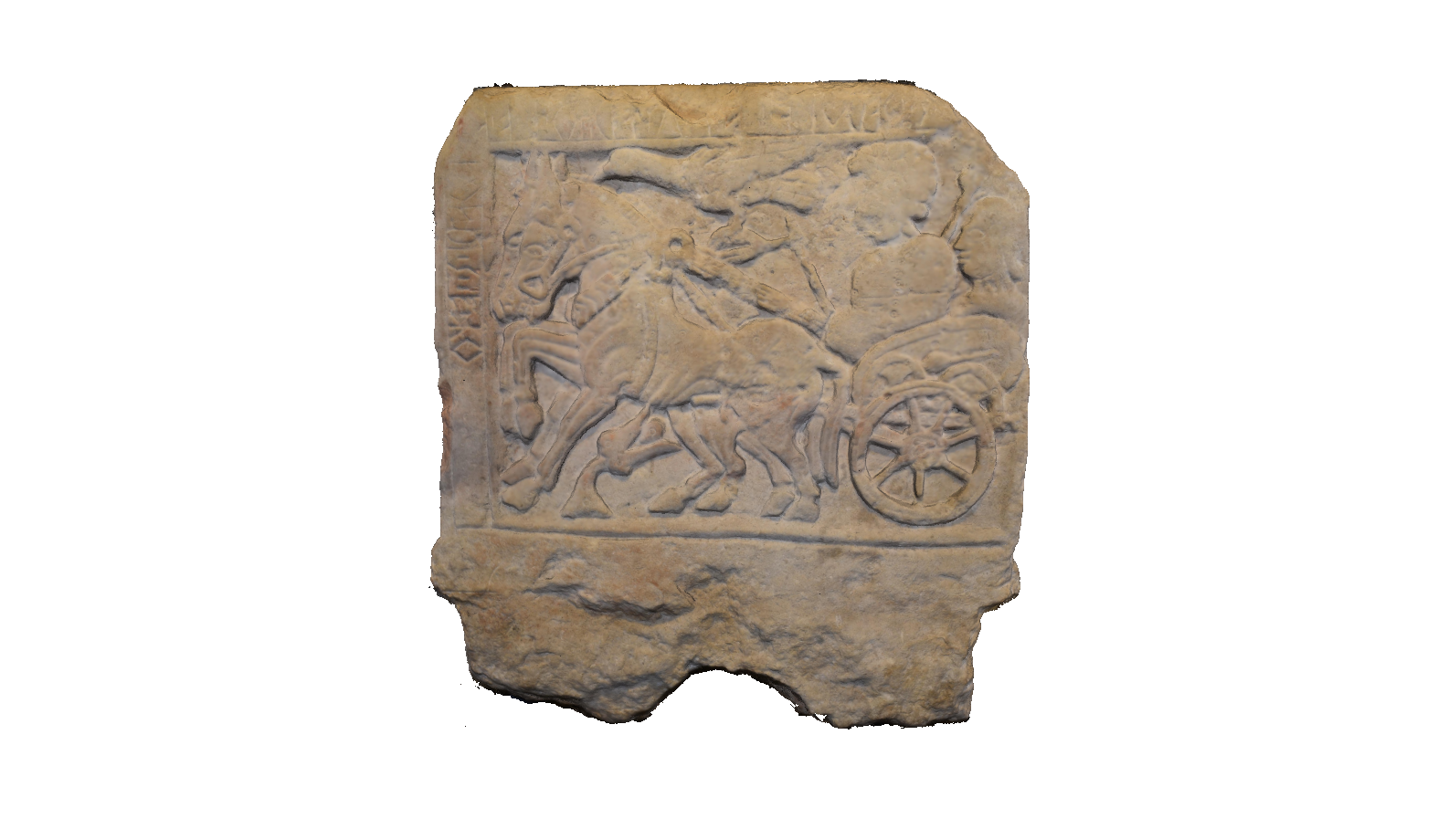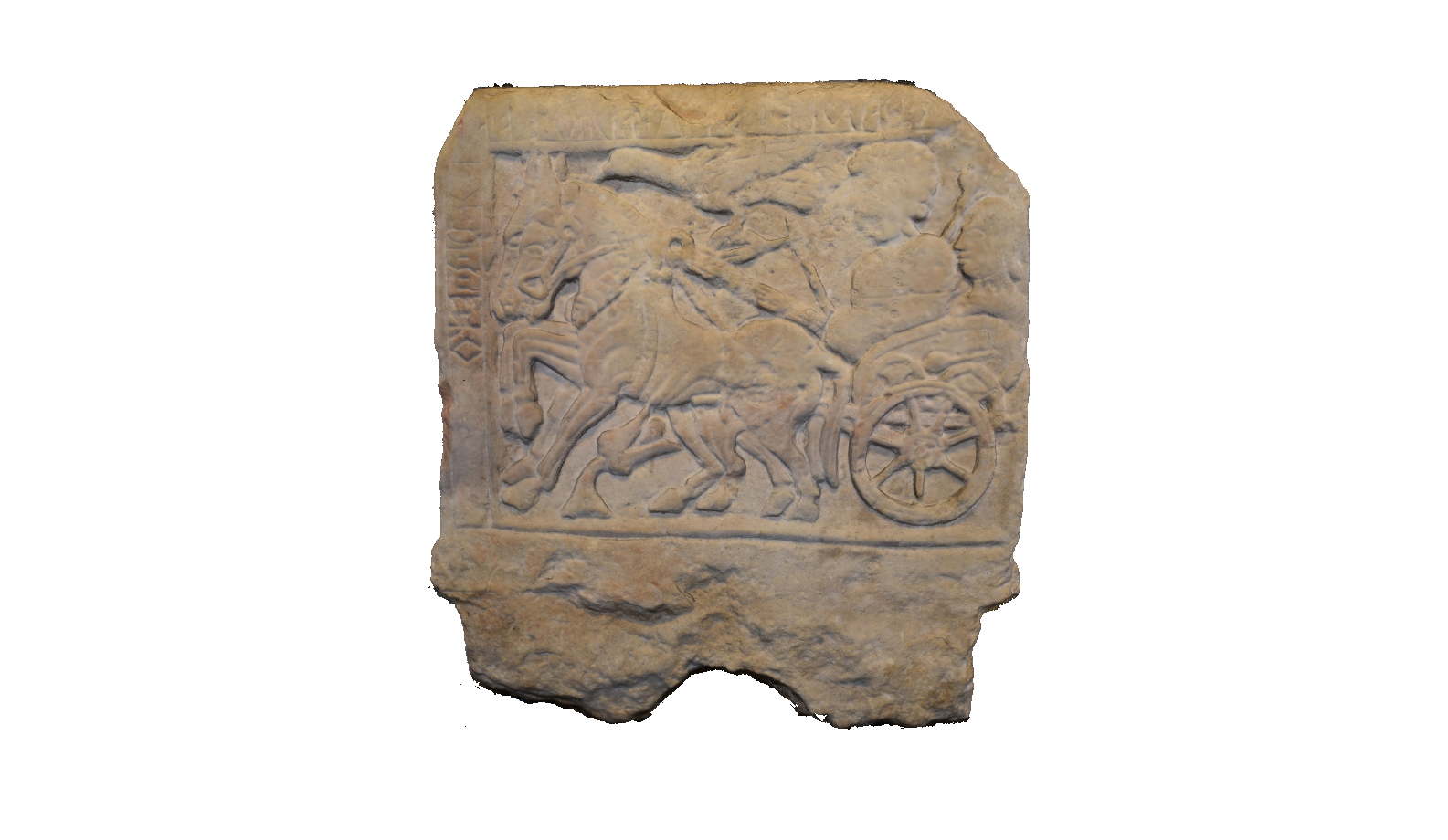Description
Click on the image to go full screen
This stele was discovered by chance in vicolo Ognissanti (present-day via Tiepolo), in Padua, during work on a sewerage system. For several years it remained in the discoverer's house in Albignasego before being given to the museum. It is a slab in Costoza stone, limestone from the Berici Hills, made around the second half of the 4th century BC.
The central part of the stele is occupied by a bas-relief depicting a pair of harnessed horses pulling a chariot, on which the charioteer and a figure with a disproportionate head, possibly an elderly woman, can be recognised. Leaning on the edge of the chariot, above the large wheel, is a shield, while a bird above the animals' heads and an asphodel under their feet clarify the meaning of the scene: it is the deceased's journey to the afterlife, the flower symbolising the meadows on the banks of the Acheron, the infernal river.
Along the upper part of the frame runs an inscription in venetic, readable from right to left: the text, written in the first person in the classic expedient of 'the speaking object', mentions the term ekupetaris, already present in other funerary stelae such as the older Camin stele, referring to the class of ekupetari, the owners of horses - the nobility -. The character's name, however, is not clearly recognisable or comparable with similar names present in the area, so it is likely that he was a foreigner who had moved to Padua, who chose to use venetic funerary iconography and writing and showed that he was well integrated into the local aristocratic class.

